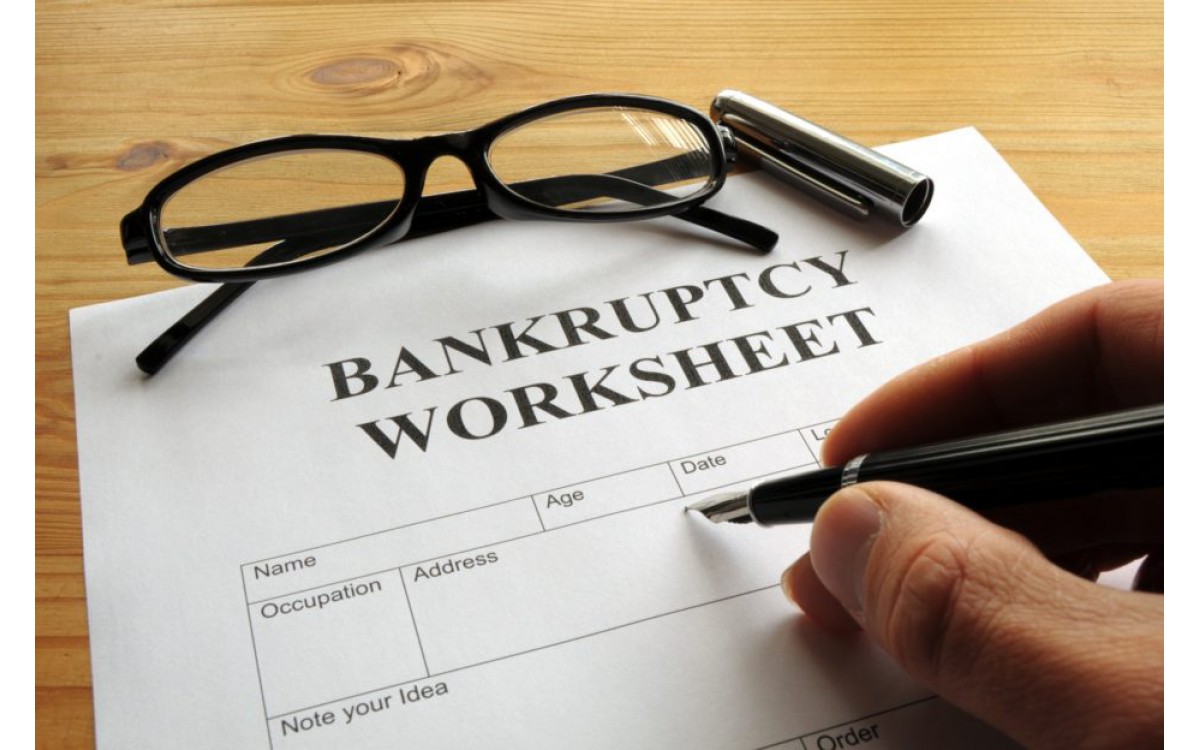Bankruptcy
Glossary of Terms
Filing bankruptcy can be a difficult
decision. To assist you with the process, MyLegalEdge has compiled a
list of terms that will be useful in understanding the bankruptcy process. If
you are in need of bankruptcy forms, MyLegalEdge can assist you.
Now, let’s discuss bankruptcy terms.
341 Meeting: This is the first meeting of the creditors. The debtor is
required to attend the meeting where his or her debtors will likely attend. If
the debtor doesn’t show up, usually his or her bankruptcy case is dropped by
the bankruptcy court. The meeting is usually held within a month of the
official bankruptcy filing or after the debtor files his or her schedules of
financial information.
Absolute Priority: This bankruptcy term refers to the order of payment to
different creditors, which is determined by the U.S. Bankruptcy Code.
Generally, claims with higher priority are paid in full before “lesser” claims,
allowing senior creditors to be paid first and junior creditors and
shareholders to be paid second.
Here’s the general order of payment
in order of priority: administrative claims; statutory priority claims (tax
claims, rent claims, consumer deposits and unpaid wages from before the
filing); secured creditors’ claims; unsecured creditor claims; and, lastly,
equity claims.
Abusive Overdraft Loan:small
amount, short-term, high-interest loans given by banks to those who overdraw
their accounts.
Abusive overdraft loans have become
the norm for most banks, and cost consumers billions of dollars each year.
Adequate Protection:
This term refers to the right of a person or company that has interest in the
debtor’s property to assurance that its interest won’t be devalued during the
debtor’s bankruptcy filing.
Adjustable Rate Mortgage (ARM):mortgage loan with a monthly payment that “adjusts” or
changes from month to month. Compare to a fixed rate mortgage, in which
payments remain constant throughout the lifetime of the loan.
When the housing market was strong,
mortgage “innovations” like ARMs were marketed aggressively, often to borrowers
who didn’t fully understand and/or couldn’t afford the loans. As a result, many
borrowers defaulted on payments, which touched off the foreclosure crisis.
Administrative Claim/Administrative
Expense Claim: This is debt that the debtor
accumulates after the bankruptcy filing. The debtor must have court approval to
take on the additional debt. Some examples of administrative claims are:
necessary costs of preserving a home, salaries, court-related costs, bankruptcy
lawyer or accountant fees and trustee expenses.
Adversary Proceeding: This is a document in a lawsuit in U.S. bankruptcy court.
These proceedings are initiated by a person or company filing a complaint. It
may be filed by the bankruptcy trustee, other parties or the debtor himself if
he wants to formally complain that a creditor violated the bankruptcy automatic
stay.
Allowed Claim/Allowed Interest: This is the claim of a creditor that the bankruptcy court
approves to satisfy the plan of reorganization.
Arrangement: This can be a formal or informal agreement between
creditors and the debtor about how a bankrupt company or person is permitted to
operate while in bankruptcy.
Asset: any item of value owned by a person or entity.
In Chapter 7 bankruptcy, the trustee
can convert non-exempt assets to cash to repay creditors.
Automatic Stay: an injunction (provision) of bankruptcy law that protects
those who file bankruptcy from most collection actions, including garnishment,
lawsuits, repossession, debt collection an d foreclosure.
In most cases, an automatic stay
goes into effect as soon as a bankruptcy case is filed.
Avoidance Power: The bankruptcy court has the power to invalidate certain
debtor obligations and transactions that he or she made before filing
bankruptcy. It’s typically intended to reverse transfers of property that may
have promoted one creditor over another.
Ballot
Date: This is the date and time during a
company bankruptcy reorganization that the bankruptcy court sets where all
votes for accepting or rejecting the plan of reorganization must be delivered.
Bankrupt: This is a non-technical term that describes the person or
company that files for bankruptcy protection.
Bankruptcy: a legal declaration by an individual (or a company) stating
an inability to pay creditors. United States Bankruptcy Code provides several
versions of bankruptcy to offer individuals a “fresh start” financially after
receiving a bankruptcy discharge.
Individuals can file for Chapter 7
bankruptcy or Chapter 13 bankruptcy, depending on their financial situation and
goals for bankruptcy. Click here for more about the differences between Chapter
7 bankruptcy and Chapter 13 bankruptcy.
Bankruptcy Act of 1898: This was the base of federal bankruptcy law until the
Bankruptcy Reform Act of 1978. It focused on the liquidation of businesses.
Under this act, company reorganization could be effected indirectly through
equity receiverships that were used to keep creditors from seizing assets of
troubled companies.
Bankruptcy Act of 1933: This was an expansion of reorganization statutes for
companies filing bankruptcy during the Great Depression. Both this act and the
Bankruptcy Act of 1934 were superseded by the Chandler Act of 1938.
Bankruptcy Act of 1934: This was another statutory expansion of reorganization for
companies during the Great Depression, which was overridden by the Chandler Act
of 1938.
Bankruptcy Amendments of 1984: These amendments to the Bankruptcy Reform Act of 1978
consisted of provisions that allowed the prevention of “substantial abuse,”
limited the jurisdiction of the bankruptcy court and limited the right of
companies to automatically invalidate labor contracts when filing bankruptcy.
Bankruptcy Code: After the Bankruptcy Reform Act of 1978, this was the given
name to the body of U.S. bankruptcy laws.
Bankruptcy Court: This is the federal tribunal where bankruptcy cases are
reviewed and litigated under the U.S. Bankruptcy Code.
Bankruptcy Estate: This term refers to the debtor’s property that is subject
to authority of the bankruptcy court.
Bankruptcy Petition: the legal forms that must be filed at court for a
bankruptcy case to officially begin.
Once your lawyer has filed your
bankruptcy petition with the court, you can expect different events from
Chapter 13 bankruptcy cases and Chapter 7 bankruptcy cases.
Bankruptcy Reform Act of 1978:This act took effect on October 1, 1979, and is considered
to be the first substantive bankruptcy law revision since the Chandler Act of
1938.
In the 1978 act, some of the major
changes to the U.S. Bankruptcy Code included:
- allowing husband and wife to file a single joint
bankruptcy petition;
- introducing Chapter 13 bankruptcy protection;
- allowing direct appeal to the U.S. Courts of Appeal;
- reorganizing the chapters of bankruptcy protection,
specifically for business bankruptcy filings as Chapters 5, 6 and 7 were
replaced by Chapter 11 bankruptcy;
- giving the bankruptcy court authority to deal with
cases handled by other courts; and
- making more extensive exemption provisions and options
for debtors.
Bankruptcy Reform Act of 1994: This act took effect on October 22, 1994, and is the most
significant bankruptcy law revision since the Bankruptcy Reform Act of 1978.
Most of the provisions went into effect immediately after it passed.
In the 1994 act, some of the major
changes to the U.S. Bankruptcy Code included:
- allowances for expedited bankruptcy filings;
- standardization of certain bankruptcy fees;
- provisions that encouraged people to file Chapter 13
bankruptcy over Chapter 7 bankruptcy (rescheduling debt over discharging
debt);
- ways for creditors to recover claims against bankruptcy
people and companies; and
- creation of the National Bankruptcy Commission to
investigate future changes in bankruptcy law.
Bankruptcy Rule 2004: This was an added provision to the U.S. Bankruptcy Code
which allowed one party in a bankruptcy case to compel discovery (or
investigate) against another party.
Bankruptcy Tax Act of 1980: Because the Bankruptcy Reform Act of 1978 didn’t specify
how certain tax matters should be handled in bankruptcy cases, this act spelled
it out. It specified the dealings of (among other tax issues) tax loss
carry-forward and exchanges of equity for debt.
Bankruptcy Trustee: an individual appointed by the U.S. Department of Justice
or by the creditors in a bankruptcy case to oversee the proceedings of the
bankruptcy case.
In Chapter 7 bankruptcy cases, the
trustee is in charge of gathering and distributing any non-exempt property. In
Chapter 13 bankruptcy cases, the trustee must distribute the debtor’s monthly
payments to the creditors, and makes sure everyone involved adheres to
bankruptcy laws.
BAPCPA (Bankruptcy Abuse Prevention
and Consumer Protection Act):
the new bankruptcy laws passed in October, 2005. BAPCPA introduced a qualifying
“means test” for potential Chapter 7 bankruptcy filers, made credit card debt
more difficult to discharge in bankruptcy filings and added the Credit
Counseling and Debtor Education requirements. Detailed government site on
BAPCPA.
Bar Date: This date is set by the bankruptcy court and is the last
date that creditors can file a claim against the debtor.
Business Bankruptcy: The U.S. Administrative Office of the Courts divides
bankruptcies into either business bankruptcy or non-business bankruptcy.
Business bankruptcies involve companies.
Business Failure: This is the economic assessment of the capability of a
company. When a business is determined to be a “failure,” it means that the business
is earning below the normal rate of return or it is not meeting its debt
obligations. Note: A failing company is not necessarily considered a bankrupt
company, and vice-versa.
Cash
Collateral: Refers to cash and equivalents held
by the debtor in Chapter 11 bankruptcy that are subject to creditors’ liens.
Chandler Act of 1938: This act went into effect toward the end of the Great
Depression and modified the Bankruptcy Act of 1898. It provided for substantial
provisions for reorganization of businesses. Specifically, it allowed the
Federal Trade Commission to assist federal courts in business reorganization.
Chapter: The U.S. Bankruptcy Code is organized into different chapters. Chapters 1, 3 and 5
generally involve matters of general application. Chapter 7 bankruptcy, Chapter
9 bankruptcy, Chapter 11 bankruptcy, Chapter 12 bankruptcy and Chapter 13
bankruptcy generally cover liquidation matters for personal bankruptcy and
business bankruptcy, city/town bankruptcy, business reorganization, debt
adjustments and personal reorganization.
Chapter 7 Bankruptcy: a type of personal bankruptcy sometimes referred to as
“liquidation” bankruptcy because a bankruptcy trustee can liquidate (convert to
cash) any non-exempt assets to help pay off debts.
In order to qualify for Chapter 7
bankruptcy, you must pass the Chapter 7 means test. Those who don’t qualify for
Chapter 7 bankruptcy can file under Chapter 13. Click here for details on
Chapter 7 bankruptcy.
Chapter 9 Bankruptcy: This bankruptcy chapter focuses on bankruptcies of
municipalities, like cities and towns. These are rare and usually only a few
are filed each year.
Chapter 10 Bankruptcy: This bankruptcy chapter is designed for small business
reorganizations.
Chapter 11 Bankruptcy: This bankruptcy chapter focuses on reorganization
proceeding for businesses. Under this chapter, the debtor typically maintains
control of the business while it’s restructured.
Chapter 12 Bankruptcy: This bankruptcy chapter is for family farmer bankruptcies
and was created in 1986. Only family-owned farm businesses can file for this
protection and it must have less than $1.5 million in debt.
Chapter 13 Bankruptcy: a type of personal bankruptcy sometimes referred to as a
“reorganization of debts.” In Chapter 13 bankruptcy cases, debtors work with
the bankruptcy court to develop a three to five year repayment plan to
eliminate their obligations to creditors.
Chapter 13 bankruptcy generally
allows filers to keep their homes and cars, and offers a chance to get caught
up on debts. Click here for details on Chapter 13 bankruptcy.
Chapter 20 Bankruptcy: This is a slang term used to describe a person or business
filing Chapter 7 bankruptcy then, shortly thereafter, filing Chapter 13
bankruptcy.
Chapter 22 Bankruptcy: This is a slang term used to describe a company that has
filed Chapter 11 bankruptcy twice.
Chapter 33 Bankruptcy: This is a slang term that describes a company that has
filed for Chapter 11 bankruptcy protection three times.
Checkbook Loan: a term introduced in Illinois to rebrand loans offered by
payday loan stores in efforts to skirt state regulations against payday loans.
Claims: Debtors can file these rights to repayment against a
debtor. Claims can be secured, unsecured, liquidated, unliquidated, matured,
unmatured, fixed, contingent, subordinated, legal or equitable.
Class: Creditor claims are given categories, or classes, and then
are ranked by priority of payment.
Collateral: An asset given as security for a loan.
In a mortgage loan, the house is
considered collateral for a loan: if the borrower doesn’t repay the loan as
agreed, he will lose the house. The borrower has an incentive to keep up with
payments: being able to live in the house.
Confirmation: This is the bankruptcy court’s final approval for a plan of
reorganization. Note: Creditors must approve the plan before the court
does so.
Contested Matter: Any dispute among the involved parties that is initiated by
the filing of a motion to the bankruptcy court.
Convenience Claims: Often called small claims, convenience claims are around
hundreds or low thousands of dollars and are usually grouped into a single
class and settled for cash.
Conversion: This involves changing chapters in bankruptcy when you are
already involved in a bankruptcy filing.
Core Proceedings: These are proceedings that are fundamental in a bankruptcy
case. They are subject to the jurisdiction of the bankruptcy court.
Cosigner: One who literally co-signs loan papers with somebody else.
Legally, a cosigner is responsible for making payments on a loan if the primary
borrower is unable to do so.
People rebuilding after bankruptcy
can sometimes qualify for more attractive loan terms by enlisting a cosigner
with a strong credit history.
Cramdown: This refers to the bankruptcy court confirming a plan of
reorganization over the objection of creditor(s).
Credit Counseling Briefing: Sometimes called the “ticket in” to the bankruptcy process.
The Credit Counseling Briefing must be completed before you file your
bankruptcy petition for a judge to accept your case. Credit Counseling
Briefings can be completed on the Internet, over the phone or in person.
If your Credit Counseling Briefing
is not completed in the allotted time, your bankruptcy judge is likely to throw
out your bankruptcy case.
Creditors’ Committee: This is a committee of representatives for the creditors
that is appointed by the trustee. The committee works on behalf of all of the
debtor’s creditors to negotiate a plan of reorganization.
Credit Report: A record of your credit history which includes your payment
actions on a variety of credit sources, including credit cards, mortgage loans,
rent, car loans and more. The Fair Credit Reporting Act of 2003 mandated that
all consumers have access to one free credit report per year from each of the
big three credit reporting agencies (Equifax, Experian
and TransUnion).
Checking your credit report
regularly is essential to your credit health. Regular checks can help you avoid
identity theft and make sure your information is being reported accurately.
Identity theft and mistakes on your credit report could end up costing you
thousands in stolen funds and unfavorable loan terms. Credit reports are
becoming more important in the financial landscape of the United States.
Credit Reporting Agency (Credit
Bureau): An organization that collects,
documents and reports consumer credit information. CRAs offer free credit
reports to consumers, which are available at www.annualcreditreport.com.
The three major CRAs are Equifax, Experian
and TransUnion. Note that
the website listed above is the only site on the web that guarantees you a free
credit report with no strings attached. Sites with similar names advertise free
credit reports, but often charge you for products and services you don’t need.
Credit Score: The credit score is a number between 300 and 850 that
measures the credit risk of an individual consumer. The number is calculated
with a formula developed by the Fair Isaac Corporation, and is used by lenders
to assess how much potential borrowers can afford.
Borrowers with low credit scores are
considered “subprime,” and are considered high lending risks. Those with high
credit scores are considered “prime,” and generally qualify for more favorable
loan terms and larger loans.
Creditor: someone to whom a debtor owes money.
In Chapter 13 bankruptcy cases,
filers work within a repayment plan to satisfy most or all of their financial
obligations to creditors.
Debtor: Someone who owes money to a creditor.
Many people file for bankruptcy in
order to clear debt by repaying the money they owe their creditors or by
receiving a discharge from the bankruptcy court.
Debtor-In-Possession: This refers to the debtor who is in control of operations.
Debtor Education: A requirement of the BAPCPA, the Debtor Education course
must be completed by every bankruptcy petitioner. You cannot receive your
bankruptcy discharge until you have completed the Debtor Education course.
The course is designed to prepare
bankruptcy filers for life after bankruptcy. The skills taught in the Debtor
Education course include debt management and money-handling, and are intended
to help filers take advantage of the fresh start bankruptcy provides.
Tags: bankruptcy Chapter 7 Chapter 13 bankruptcy terms 341 Meeting fresh start









